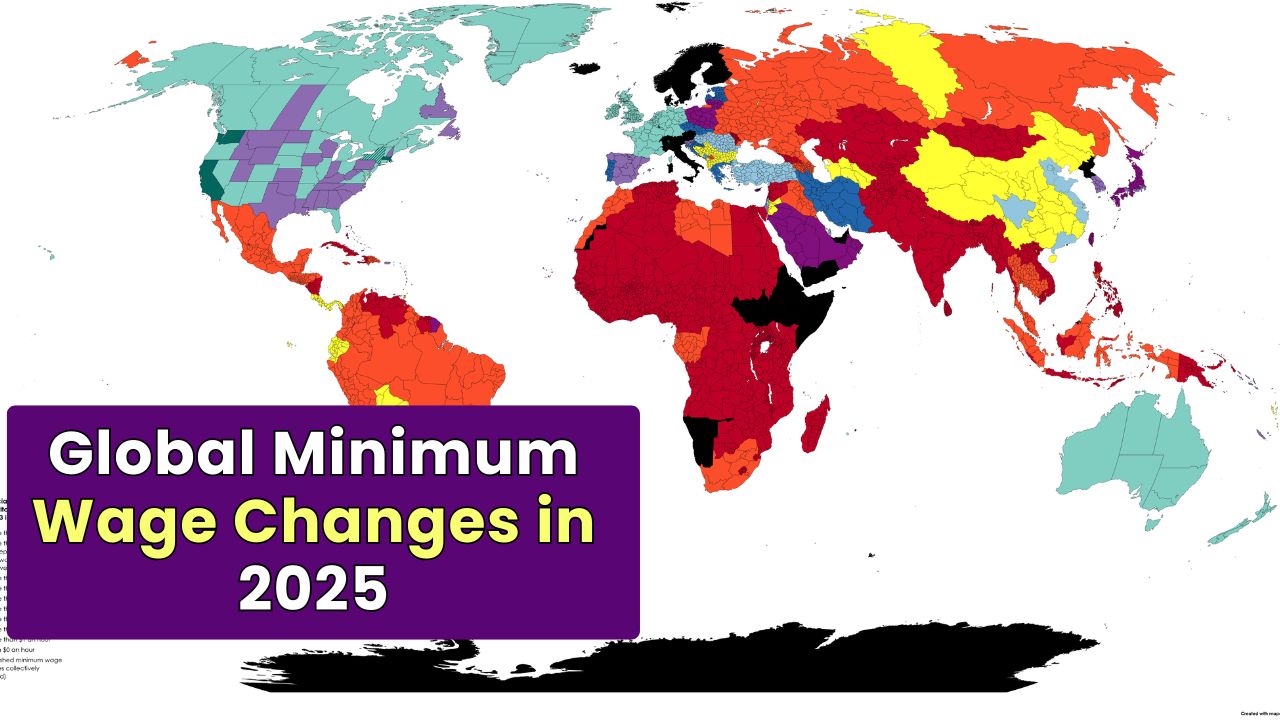In 2025, many countries are revisiting their minimum wage policies to ensure fair pay for workers, especially foreign workers who contribute significantly to various industries worldwide. This article explores the latest updates on global minimum wage changes and their impact on foreign workers, including adjustments in wage rates, legal protections, and industry-specific changes. These updates are essential for workers and employers to stay informed and plan their labor strategies effectively.
Overview of Global Minimum Wage Changes in 2025
The global minimum wage landscape is continuously evolving as governments strive to balance economic growth and the welfare of their workforce. In 2025, several countries have introduced or adjusted their minimum wage policies to support both their local workforce and foreign employees. This includes increases in wage rates, the introduction of new minimum wage standards for specific sectors, and changes in wage laws to improve living conditions for workers.
Regional Highlights of Minimum Wage Changes
Different regions around the world are implementing wage increases based on the economic conditions and the cost of living in each country. In Europe, several nations have raised their minimum wage to keep up with inflation, while other countries in Asia have made efforts to ensure that foreign workers, especially those in labor-intensive sectors, receive better wages and working conditions.
North America, particularly the United States and Canada, has also adjusted its federal and state-level minimum wage policies in response to growing calls for fair compensation.
Impact of Minimum Wage Changes on Foreign Workers
The revised minimum wage policies in 2025 are expected to have significant implications for foreign workers. In many countries, foreign workers are employed in industries like construction, agriculture, and hospitality, where minimum wage laws are critical to ensure fair treatment. Increased wages will not only improve the financial security of foreign workers but will also provide them with more opportunities for social mobility and economic stability.
For employers, these changes mean adjustments to pay scales, compliance with new labor laws, and a commitment to ensuring foreign workers are treated fairly. Workers will also see improved job security as countries implement stricter enforcement measures to ensure businesses are meeting their obligations regarding wage payments.
Country-Specific Minimum Wage Adjustments in 2025
Several countries have implemented country-specific changes to their minimum wage rates in 2025. For example, in the European Union, some member countries have aligned their minimum wage rates more closely with the cost of living, particularly for foreign nationals working in high-demand sectors. Similarly, countries like Australia, Canada, and the United States have made incremental increases in their minimum wages to support the growing number of foreign workers in essential sectors.
Challenges for Employers and Workers
While the wage increases are a positive step for foreign workers, there are challenges ahead for both employers and employees. Foreign workers may face difficulties in adjusting to the rising costs of living in countries with higher wage rates. Additionally, employers will need to ensure that their businesses remain competitive by managing higher labor costs, especially in industries reliant on foreign labor.
Another challenge is ensuring that wage increases are not offset by rising costs elsewhere, such as higher accommodation expenses or limited access to affordable healthcare and benefits for foreign workers.
Looking Ahead: Future Trends in Global Minimum Wage Policies
As 2025 progresses, it is expected that more countries will follow the lead of those who have adjusted their minimum wage rates to benefit foreign workers. Many international organizations and labor advocates are pushing for the creation of global standards for fair wages that prioritize equity and fairness for all workers, irrespective of nationality.
Moreover, with automation and the rise of remote work, the dynamics of the labor market are changing. Minimum wage policies might also evolve to reflect these shifts, offering new opportunities and challenges for both foreign workers and employers in the global job market.
Conclusion
The global minimum wage updates in 2025 are a critical development for foreign workers, as they promise to improve wages and working conditions. While challenges remain, the continued efforts to raise wages and enhance worker protections are encouraging.
For foreign workers, these changes could mean a better quality of life, while employers must adapt to new labor laws and pay structures. As the year progresses, monitoring these updates and understanding their implications will be crucial for both workers and employers across the globe.



